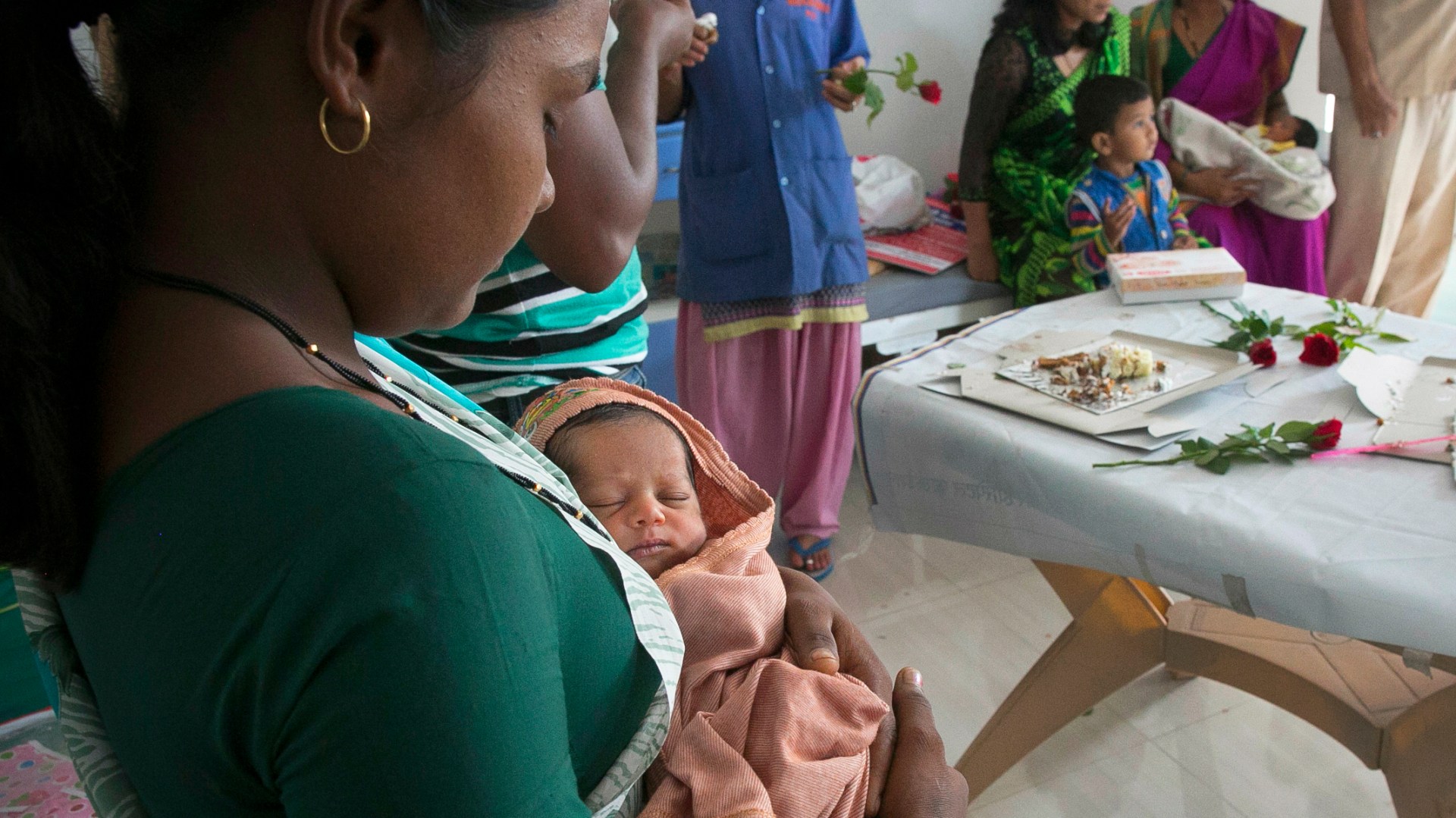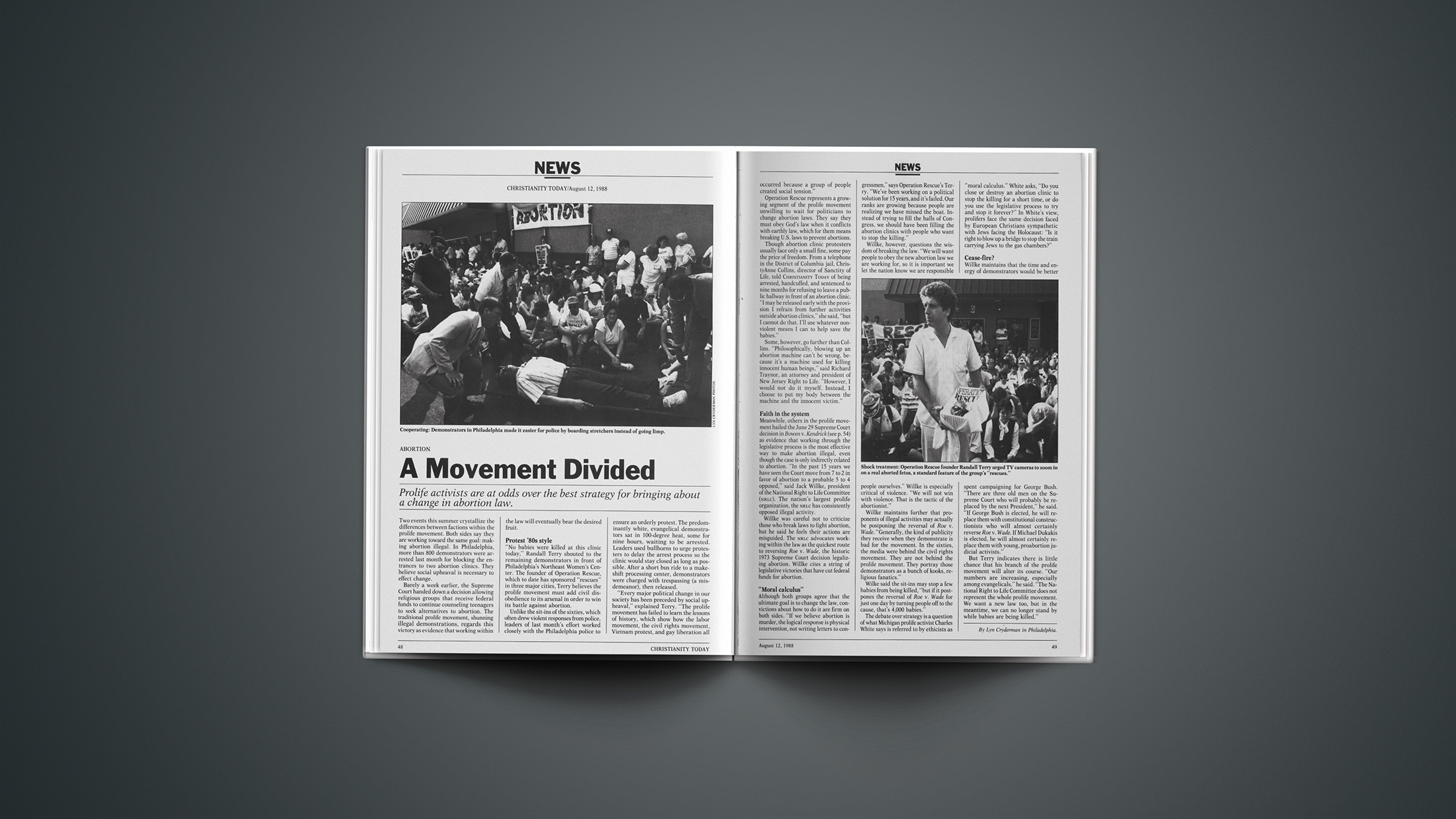Nine million girls have gone “missing” in India over the past two decades due to sex-selective abortions, according to a new report on sex ratios and gendercide in the world’s second-most populous nation.
The problem rests mainly within the Hindu and Sikh communities, according to government-backed data, while the subcontinent’s Christians have maintained a “natural balance” of sons and daughters since 2001, according to a Pew Research Center analysis released today.
Pew estimates that Christians account for 53,000 of the missing girls in India, whereas Hindus account for 7.8 million girls, Muslims account for 590,000 girls, Sikhs account for 440,000 girls, and other religious groups such as Buddhists and Jains account for 110,000 girls.
The tallies were disproportionately high for Hindus, who comprise 79.8 percent of India’s population yet 86.7 percent of the missing girls, as well as for Sikhs, who comprise 1.7 percent of the population yet 4.9 percent of the missing. The tallies were disproportionately low for Muslims, who comprise 14.2 percent of India’s population yet 6.6 percent of the missing girls, as well as for Christians, who comprise 2.3 percent of the population yet 0.6 percent of the missing.
However, bias toward sons is waning among all religious groups in India, and researchers concluded the annual number of missing girls has dropped from about 480,000 in 2010 to about 410,000 in 2019.
“The new data suggests that Indian families are becoming less likely to use abortions to ensure the birth of sons rather than daughters,” stated Pew research associate Yunping Tong. “This follows years of government efforts to curb sex selection—including a ban on prenatal sex tests and a massive advertising campaign urging parents to ‘save the girl child’—and coincides with broader social changes such as rising education and wealth.”

Pew’s latest report on religion in India examines the sex ratio at birth among Hindus, Muslims, Christians, and Sikhs, as other religious communities were too small to study. The report found “signs of normalization” in the ratio of baby boys to baby girls, with “son preference” or “daughter aversion” declining “sharply” among Sikhs which previously had the greatest gender imbalance.
While acknowledging geographic variations in laws and norms within India, Pew explained:
Around the world, sex selection is often attributed to “son preference” (or “daughter aversion”), a form of gender bias in which families prioritize having sons over daughters for economic, historical or religious reasons. In India, son preference may be tied to cultural practices that make daughters more costly to raise than sons. In Indian tradition, only sons pass down the family name, thereby carrying on the family lineage, and Hindu sons are expected to perform last rites for deceased parents, including lighting the funeral pyre and scattering their ashes. Sons have also been a way for families to preserve ancestral property because males generally dominate inheritance lines (even though most Indian inheritance laws now prohibit gender discrimination).
Daughters, meanwhile, often take wealth away in the form of large dowries at the time of marriage, with payments sometimes continuing throughout a daughter’s life. And while sons continue to live in the parental home after marriage, with wives who often become the primary caregivers for aging in-laws, a daughter is expected to move away from her parents and into her husband’s family home.
The natural sex ratio at birth is approximately 105. The advent of prenatal testing and legalized abortion in India in the 1970s led to a rise in sex-selective abortions that skewed its sex ratio to a recorded high of 111.2 male births per 100 female births in 2010. This put India among the most skewed nations in the world from 2000 to 2020, alongside China, Vietnam, Albania, Armenia, and Azerbaijan. (The United Nations estimates that China accounts for 51 percent of missing girls and India 32 percent.)

Studying birth data from 2001 to 2021, Pew found that Christians in India have maintained a natural sex ratio of 105 or below, while Muslims have a ratio of 106, down from 109 in the 2011 census. Hindus have dropped from 112 to 109, while Sikhs have dropped from 121 to 110.
Binita Behera, a Christian sociologist in Bhubaneshwar, the capital of the eastern state of Odisha (formerly Orissa), focuses on female feticide and works with SALT, a department of the Evangelical Fellowship of India focused on issues of gender equality. She credited the healthy sex ratio for Christians to the teaching that “children are a gift from God.” She also noted that “not worrying about giving dowry in a daughter’s marriage is a big relief for Christians.”
Among Indian women ages 15–49, the share of Christians who want more sons than daughters has dropped over the past two decades from 20 percent to 12 percent. By comparison, Muslims have dropped from 34 percent to 19 percent, Hindus have dropped from 34 percent to 15 percent, and Sikhs have dropped from 30 percent to 9 percent.
Meanwhile, Indian Christians have the highest preference for more daughters, both in share (7 percent) and change (up two percentage points). And only 49 percent of Christian women with no living sons want to have more children, close to the 43 percent with no living daughters who want the same.

Yet Christian fertility rates have also declined over the past two decades, from 2.4 by 1999 to 1.9 by 2020. So have rates for all faiths: from 3.6 to 2.4 for Muslims, from 2.8 to 1.9 for Hindus, and from 2.3 to 1.6 for Sikhs.
Based on the available data on births to Christians (see sidebar below), Pew estimates:
- 12% of Indian Christian women want more sons than daughters
- 7% want more daughters than sons
- The fertility rate for Indian Christians is 1.9
- 52% of Indian Christian children are boys
“Christians know from the Bible that God created humankind as male and female and that he values them both. This is what shapes their worldview,” said Vidush Bhandari, principal of Doon Bible College in Dehradun, Uttarakhand in Northern India.
“The Bible affirms that male and female are created equal, gifted equally, and both are called by God to make his glory known in the world.”
Pew noted its report is the first to estimate “missing” girls in India by religious group. But researchers also noted that differences in sex ratios at birth are not solely due to religion.
After all, the founder of Sikhism, Guru Nanak, insisted that women deserve the same treatment as men, and Sikh holy scriptures emphasize equal rights for men and women. Meanwhile, Hindus worship divinity in female form as Shakti, as well as many female deities and consorts of male gods.
The skewed sex ratios are predominantly due to social and not only religious reasons, said Bhandari.
Pew noted that demographic factors such as wealth, education, and urbanness also play a role. So does caste.
Christians comprise 47 percent of Indian adults with 10 years of schooling, 26 percent of Indian households in the top wealth quintile, and 39 percent of Indian households in urban areas. Meanwhile, a previous Pew survey of 30,000 Indians found that 3 in 4 Christian households “belong to a historically disadvantaged caste, including 22 percent who say they are members of a Scheduled Caste.”
Pew explained:
Of India’s four major religious groups, Sikhs on average are the wealthiest, by a wide margin. Approximately six-inten Sikh households fall in the highest wealth quintile, according to the NFHS wealth index, which includes measures such as whether a household has certain appliances and where it obtains drinking water. This may be tied to their geographic concentration in India’s northwest, which is home to a disproportionately high share of wealthy households. But even within regions, Sikhs tend to be more affluent than other religious groups.
According to NFHS data, Christians are the second wealthiest group, with a quarter of Christian households (26%) in the top wealth quintile, followed by roughly one-in-five Hindus and Muslims. Although nearly half of India’s Christians are concentrated in the affluent South, the remainder reside mainly in the relatively impoverished Northeast and East, so Christians overall lag far behind Sikhs.
Christians and Muslims tend to be more urban than Hindus and Sikhs. About four-in-ten Christian and Muslim households are in urban areas, compared with roughly three-in-ten Hindu and Sikh households. Cities usually offer more advanced hospitals, public transportation and other essential facilities. However, Muslims who live in cities tend to be concentrated in poorer urban areas with limited access to basic services such as water, health care, education and sanitation. The same is true of other socially disadvantaged groups, such as Dalits and tribal communities.
Premjeet Titus, pastor of Ekklesia Christian Fellowship in Mohali, Punjab, believes that dowry culture is the primary reason for female feticide.
“The moment a girl child is born, poor parents start to think about somehow arranging for 10,00,000 rupees [USD 12,500] for her marriage,” he said. “… They don’t spend on the education of their children but instead start to save for the marriage. Because it is so hard, it’s easier for them to kill the girl child in the womb.”
A dowry prohibition act has existed since 1961, but is not enforced. Titus thinks the government should enforce it, while churches should educate their members and create opportunities for equality.
“The church has a vital role to play. The church has to go out,” said Titus. “Let’s not wait for a crowd; 1-on-1 conversation has a greater effect.”
Lack of education is a major factor maintaining the societal bias against female offspring, said Rajan Baby, senior pastor of Indian Christian Assembly in Chandigarh, the joint capital of the northern states of Punjab and Haryana. After leading his church for 40 years, he believes awareness campaigns and intentional effort on the part of the society can overcome the gap.
“Children are a gift of God, and must be treated as such,” he said. “Life is sacred and should not be snuffed out in this manner.”
“We grow up to be what we have observed while growing up,” said Behera. She noted how in the Northeast both men and women cook, unlike in other parts of India. “When a boy grows up watching his dad help his mom in the kitchen, he grows to become a man who knows that work is not gender sensitive.”
Behera believes Christians can aid gender equality. “We must continue to reiterate—in all our retreats, youth programs, seminars, and Sunday school events—and to practice gender equality conduct.” For example, at a youth retreat assigning the responsibility of buying vegetables to the boys and sweeping to the girls. “By bringing gender equality in our churches, we will be giving rise to a different practice.”
The Indian government has been running a massive advertising campaign urging parents to “save the girl child.” In December 2021, the Parliamentary Committee on Empowerment of Women reported the flagship BBBP campaign—“Beti Bachao, Beti Padhao,” or “Save the girl child, educate the girl child”—launched in 2015 had spent 80 percent of its funds only on media advocacy, according to The Hindu newspaper.
Pew’s methodology and analysis rely mostly on India’s last census, which dates to 2011 because a 2021 update was delayed, and its government-supported National Family Health Survey (NFHS), most recently conducted from 2019 to 2021.
“Aborting females may have consequences that reverberate beyond the families making the choice,” noted Tong. “International research shows that societies with high rates of sex-selective abortions typically suffer within a couple of decades from a shortage of marriageable women and a surplus of men seeking brides. This ‘marriage squeeze’ can trigger a variety of social problems, such as increases in sex-related violence and crimes and trafficking of women.
“Even if India’s sex ratio at birth continues to normalize, the large number of girls ‘missing’ from its population could continue to have profound consequences on Indian society for decades to come.”

Additional reporting by CT editors. Pew’s specific analysis of Christians is posted below:




–











